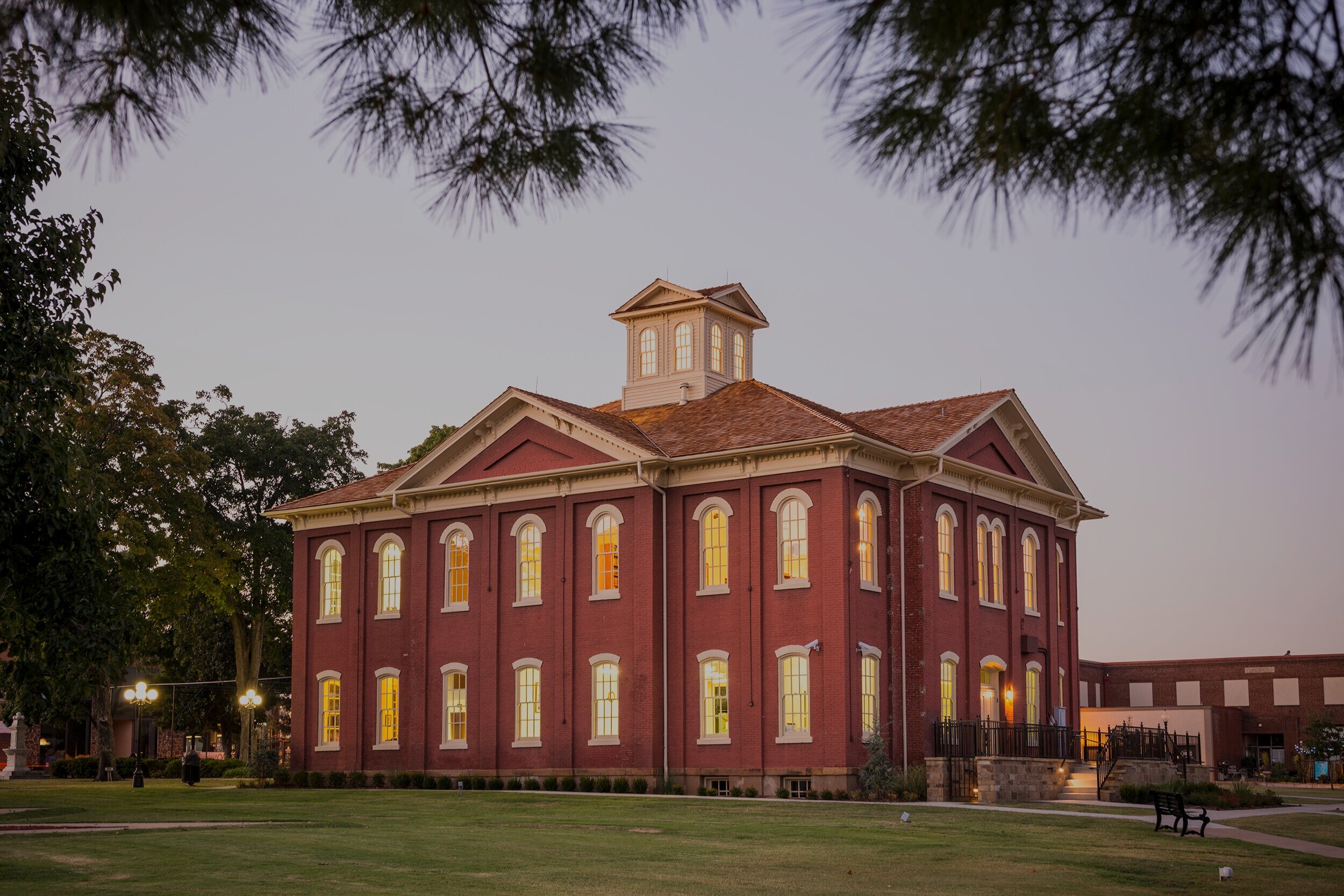
History and Culture
The Cherokee people were forced from their homes by the U.S. Government in 1836 starting "The Trail of Tears." After walking over 5,000 miles and crossing 9 states, the Cherokee were relocated to Oklahoma along with hundreds of other indigenous tribes. Today, the Cherokee Nation is alive and well and welcome visitors from all over the world to learn and experience their culture!
Cherokee National History Museum
Housed in the renovated Cherokee National Capitol in downtown Tahlequah, the Cherokee National History Museum tells the Cherokee story through immersive exhibits and augmented reality.
Exhibits feature commissioned art by Cherokee Nation artists, as well as artifacts on loan from the Smithsonian, Gilcrease Museum, Oklahoma Historical Society and Cherokee National Archives.
Cherokee National Supreme Court Museum
The Cherokee National Supreme Court Museum showcases the history of the Cherokee judicial system, written language and the evolution of Cherokee journalism.
This structure was built on the southeastern corner of Tahlequah town square in 1844 by James S. Pierce to house the Cherokee National Supreme Court. The Supreme and District courts both held sessions here for some time. The building also housed the printing press of The Cherokee Advocate, the official publication of Cherokee Nation and the first newspaper in Indian Territory. It is the oldest government building still standing in the state of Oklahoma.
Cherokee National Prison Museum
At the Cherokee National Prison Museum, you will learn the history of Cherokee law and order. Situated in the middle of historic Tahlequah, the prison was built in 1875 to hold the most hardened criminals in Indian Territory.
Today, it is home to a two-building interpretive site exploring the history of Cherokee crime and punishment, law enforcement, life at the National Prison and an overview of famous outlaws and their activity in the area.
Walk the grounds of the museum where a blacksmith shop demonstrates the trades taught to incarcerated prisoners, while a reproduction gallows stands as a reminder of the ultimate punishment
Hunter’s Home
Hunter’s Home is the only remaining pre–Civil War plantation home in Oklahoma. A kitchen garden, field crops, orchards, animals, and a mercantile store give visitors a window into life on a antebellum Cherokee plantation.
Visitors can experience living history season from Labor Day through Memorial Day, featuring living history interpreters demonstrating nineteenth-century trades, chores, cooking, gardening, and crafts. Living history activities are 10 a.m. to 4 p.m.
The home is a National Historic Landmark, listed on the National Register of Historic Places, and part of the Trail of Tears National Historic Trail.
John Ross Museum
The John Ross Museum showcases life and leadership of the great Cherokee, John Ross.
John Ross was Principal Chief of Cherokee Nation for more than 30 years, during some of the tribe’s most trying times. The John Ross Museum, located in historic Park Hill, gives a close-up look into the life and leadership of this great Cherokee.
Exhibits and interactive displays showcase Ross, the Trail of Tears, the Civil War, Cherokee education and the Cherokee Golden Age.
Cherokee Heritage Center
Built on the original site of the Cherokee National Female Seminary, the Cherokee Heritage Center has been committed to telling the story of the Cherokee people since 1967.
Exhibits, cultural workshops and events are year-round and offer an unforgettable way to experience the full richness of the Cherokee Nation.
MUSEUM IS TEMPORARILY CLOSED






